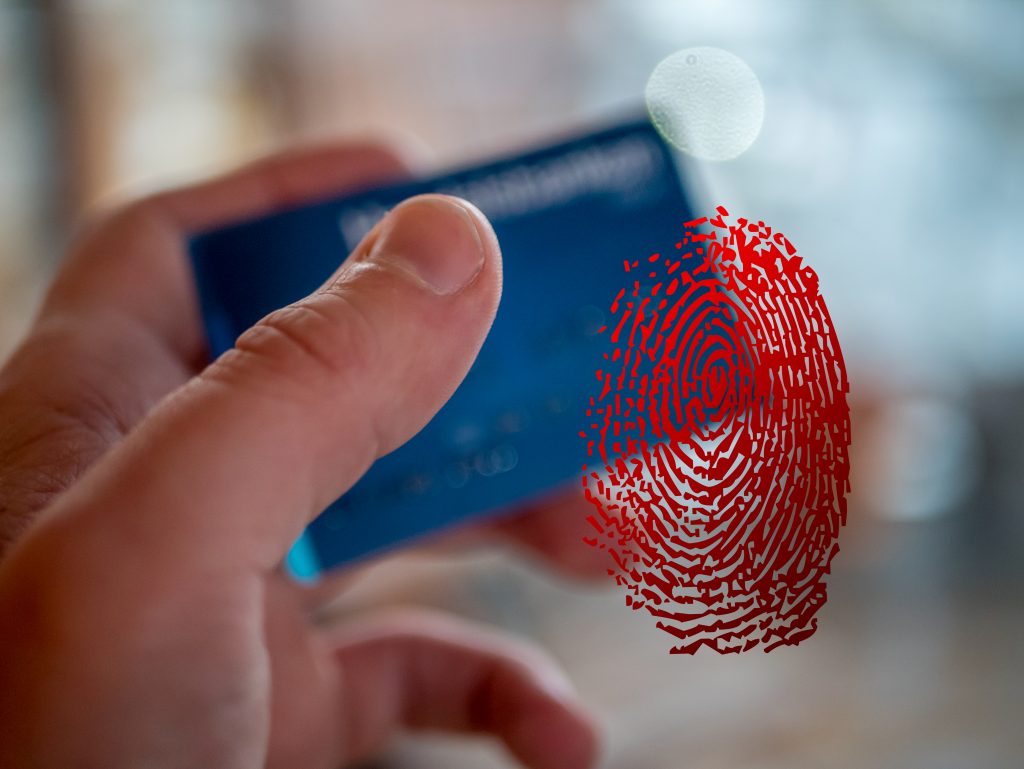Identity Fraud definition
Identity fraud is a type of fraud where an individual’s personal information is stolen and used illegally for personal gain. In biometrics, identity fraud refers to the deceptive use or manipulation of an individual’s unique biological traits, such as fingerprints or facial recognition, to gain unauthorized access or perform fraudulent activities. It involves exploiting biometric data to masquerade as the legitimate individual and deceive biometric authentication systems.
What is Identity Fraud?
Identity fraud refers to the fraudulent use or manipulation of an individual’s unique biological traits for unauthorized purposes. Biometric data, such as fingerprints, facial recognition, or iris scans, are considered highly personal and difficult to replicate, making them a valuable target for fraudsters.
Identity fraud in the biometrics domain occurs when an imposter gains unauthorized access to someone’s biometric data and uses it to deceive biometric authentication systems. This can be achieved through methods like forged fingerprints, fake facial appearances, or modified iris patterns to masquerade as the legitimate individual. By falsifying their biometric traits, fraudsters can fraudulently access secured systems, bypass identity verification processes, or perform unauthorized transactions.
The consequences of biometric identity fraud can be severe. Once an imposter gains access to someone’s biometric data, it becomes challenging to recover or protect that compromised identifier. Victims may face security breaches, financial losses, and potential compromise of their personal information. Protecting biometric data, implementing robust security measures, and continuously monitoring for suspicious activities are crucial to mitigate the risks of identity fraud in the biometric context.


What is Identity Theft?
Identity theft refers to the illicit practice of stealing or manipulating an individual’s unique biological characteristics, such as fingerprints or facial features, to fraudulently assume their identity.
Identity theft involves the unauthorized acquisition and fraudulent use of biometric data to deceive biometric authentication systems and gain access to secured systems or perform illicit activities on behalf of the victim.
Difference Between Identity Fraud and Identity Theft
Identity fraud and identity theft are closely related concepts but have distinct differences. Identity theft involves the unauthorized acquisition and use of someone’s personal information. It typically involves stealing personal data, such as Social Security numbers, credit card details, or bank account information.
On the other hand, identity fraud refers to the deceptive use or manipulation of someone’s personal information, including biometric data, to gain unauthorized access or perform fraudulent activities. It involves exploiting personal identifiers to deceive authentication systems. A real-world example of identity fraud could be when someone uses another person’s fingerprint or facial recognition to bypass security measures and gain access to their personal devices, bank accounts, or other protected systems.
To summarize, while identity fraud focuses on the manipulation or deception of biometric data or personal identifiers, identity theft revolves around the acquisition and misuse of personal information for fraudulent activities.
What is Digital Identity Fraud?
Digital identity fraud is the use of deceit and unauthorized methods to gain access to someone’s personal information for malicious purposes. It’s a continuous threat that can expose individuals to serious financial and personal harm. There are many ways in which digital identity fraud can manifest itself, including phishing emails, social media scams, and fake websites designed to trick individuals into revealing their personal or financial information.
Digital identity fraud poses a significant threat in today’s online world, and traditional authentication methods may not always be enough to protect individuals’ personal information. This is why biometric technology, which uses a person’s unique physical or behavioral characteristics for authentication, is becoming an increasingly vital aspect of digital identity protection.
What is Synthetic Identity Fraud (Synthetic ID Fraud)?
Synthetic identity fraud is a deceptive technique that involves the creation of a fictitious identity by combining real and fabricated information. In this type of fraud, the fraudster creates a new identity using a combination of stolen or fabricated Social Security numbers, names, addresses, and other personal information. This synthetic identity is then used to apply for loans, credit cards, or other financial products, allowing the fraudster to exploit the system while leaving behind a trail of financial devastation for the targeted financial institutions.
How Does Identity Fraud Happen?
Identity fraud is a complex and evolving crime that can occur through various methods and channels. Understanding how identity fraud happens can help individuals and organizations better protect themselves against this pervasive threat. Here are the key ways in which identity fraud occurs:
Phishing
Cybercriminals use deceptive emails, text messages, or phone calls to trick individuals into revealing their personal information. These phishing attempts often masquerade as legitimate entities, such as banks or government agencies, and prompt the victims to provide sensitive details like account numbers or passwords.
Data Breaches
Large-scale data breaches expose personal information held by organizations. Fraudsters exploit these breaches by obtaining the exposed data and using it to impersonate individuals or conduct fraudulent transactions.
Social Engineering
This technique involves manipulating individuals to divulge sensitive information willingly. Fraudsters may impersonate authorities or use psychological tactics to gain their targets’ trust and convince them to share personal details.
Synthetic Identity Fraud
Fraudsters create falsified identities by combining real and fabricated information. They use these synthetic identities to establish credit history, open accounts, and secure loans, often leaving financial institutions with significant losses.
Skimming
Criminals use skimmers to capture credit or debit card information when individuals use ATMs or make purchases. This stolen data is then used to create counterfeit cards or conduct unauthorized transactions.
Account Takeover
Fraudsters gain unauthorized access to individuals’ bank accounts, credit card accounts, or online profiles by exploiting weak passwords, social engineering, or other hacking techniques. Once in control, they can make fraudulent transactions or exploit the compromised account for their gain.
To protect against identity fraud, individuals and organizations should employ strong security practices, such as using unique and complex passwords, enabling multi-factor authentication, regularly monitoring financial accounts for unusual activity, and staying vigilant against phishing attempts and suspicious communications. Additionally, the use of advanced technologies like biometrics can enhance identity verification and provide an additional layer of security by validating an individual’s unique physical or behavioral traits.


How is Identity Fraud Detected?
Identity fraud is a growing threat that can have diverse consequences beyond financial losses. To detect and prevent this nefarious crime, it is imperative to remain vigilant in all aspects of our daily lives. Monitor your online presence by staying alert on social media accounts and adjusting privacy settings. Be wary of unknown individuals or organizations, as they might use social engineering tactics to exploit personal information.
It is also crucial to review healthcare records and insurance claims carefully. Fraudulent medical services and insurance claims, utilizing stolen personal information, are common forms of identity theft. By actively monitoring for discrepancies in bills, statements, and explanations of benefits, you can detect and report suspicious activities, thereby curtailing this type of fraud. Staying proactive by updating software, creating strong passwords, and being cautious of suspicious links is fundamental to preventing identity fraud. By adopting a comprehensive approach in all aspects of life, we can keep identity fraud under check and protect ourselves against its potential harm.
How Do You Manage Identity Fraud?
Biometric technology presents a promising solution to combat and manage identity fraud effectively. By utilizing unique physical characteristics, such as fingerprints, facial recognition, and even iris scans, biometrics provide a highly secure method of identity verification that is difficult to counterfeit. Implementing biometric authentication systems in various sectors, such as banking, healthcare, and government agencies, can significantly reduce the risk of identity fraud.
By enrolling in biometric authentication systems offered by financial institutions, mobile devices, and other service providers, users can enhance their security and minimize the risk of identity theft. Individuals can stay one step ahead in managing identity fraud and protecting their personal information by leveraging biometric technology responsibly.
How to Reduce Identity Fraud Risks?
Biometric technology accurately detects identity fraud by leveraging unique physical characteristics that are difficult to fake or replicate. Biometric identification methods, such as fingerprint scanning or facial recognition, capture and analyze these distinctive features to verify an individual’s identity.
One key aspect of biometric technology’s accuracy is its ability to perform liveness detection. Innovatrics liveness detection can be fine-tuned to meet the requirements of a specific use case – be it reinforced security, seamless user experience, or a chosen type of deployment. The detection algorithm uses a neural network trained in-house by seeing millions of genuine and spoof images to identify fraud, just like how a human brain learns. By incorporating liveness detection techniques, biometrics can prevent identity thieves from bypassing security checks and ensure that only genuine and valid biometric traits are used for identification.
Biometric identification’s accuracy is also enhanced by the uniqueness and permanence of the biometric characteristics. Each individual possesses distinct biological traits, such as fingerprints, face, or iris patterns that are difficult to forge or imitate.
Innovatrics has revolutionized the game with its quick and precise fingerprint recognition algorithm that stands out as one of the fastest and most accurate in the world. What’s more, this cutting-edge technology can work flawlessly on almost all computing platforms, including Windows, Linux, Android, and numerous other operating systems.
Facial recognition is a technology capable of matching a human face from a digital image or a video frame against a database of faces to confirm an individual’s identity. The deployment of Innovatrics SmartFace Platform at KAUST premises has led to notable enhancements in access control. The previous manual verification process performed by security staff has been replaced by a drive-thru access control system that utilizes face recognition technology.
The most accurate iris recognition algorithm in the world for single-eye identification currently comes from Innovatrics. This state-of-the-art technology features a compact template size and rapid template creation, making it ideal for real-world applications like border control, national ID programs, visa applications, and heightened access control requirements.
Overall, the accuracy of biometric technology in detecting identity fraud stems from its ability to leverage unique, difficult-to-replicate biometric traits and employ liveness detection techniques to ensure the authenticity of the presented biometric samples. By using these robust and reliable methods, biometric technology provides an accurate and secure means of verifying an individual, making it a valuable tool in the prevention of identity fraud.